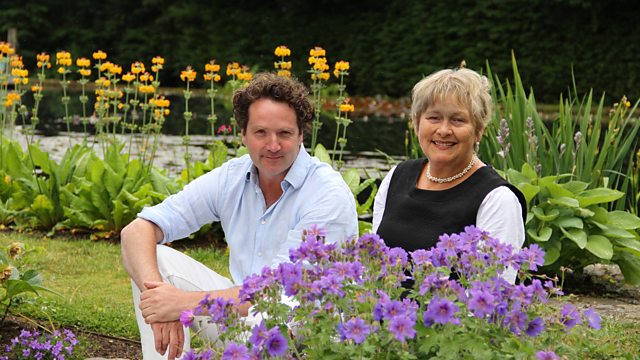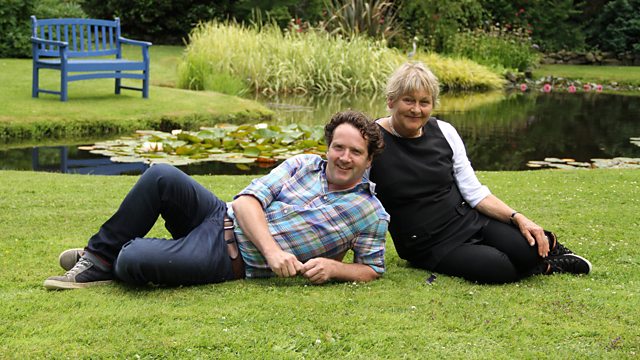Marcus Wareing’s Tales from a Kitchen Garden episode 6: Marcus has always held a vision of expanding the herb section of his smallholding. Seeking inspiration and insight, he embarks on a journey to Gloucestershire, home to the UK’s most extensive herb collection. Even with his vast knowledge and experience, this trip proves that Marcus has more to explore and learn about the intricate world of ingredients.
Upon his return to the smallholding, the seasoned gardener, Anatoli, offers him a crash course on beekeeping. Together, they delve into the nuances of caring for the bees and the art of honey harvesting. To share the excitement and passion for nature’s bounty, Marcus invites some budding junior chefs. They marvel and get inspired by the kitchen garden, much like how it invigorates Marcus’s culinary spirit.
With the fresh batch of herbs planted and thriving, Marcus feels it’s time to celebrate. He crafts a sumptuous, herb-infused feast, paying tribute to all those who have guided and supported him on this verdant journey.
Marcus Wareing’s Tales from a Kitchen Garden episode 6
Marcus Wareing (born 29 June 1970) is an English celebrity chef who is currently Chef-Owner of the one-Michelin-starred restaurant Marcus (formerly Marcus Wareing at the Berkeley) in Knightsbridge. Since 2014, Wareing has been a judge on MasterChef: The Professionals, following the departure of Michel Roux Jr. from the programme.
Wareing first worked at the Savoy Hotel under chef Anton Edelmann in 1988 at the age of 18 where he was employed as a commis chef, before leaving in 1993 to join Albert Roux at Michelin starred Le Gavroche where he first met Gordon Ramsay. Stints at other restaurants in New York City, Amsterdam and at Gravetye Manor in Sussex followed. Wareing joined Gordon Ramsay’s Aubergine when it opened in 1993, where he became Sous Chef behind Head Chef Ramsay and would go on to work with him over the course of the following 15 years, which led to Wareing being called Ramsay’s protégé. While he was at Aubergine in 1995, Wareing was awarded the title of Young Chef of the Year by the Restaurant Association.
He would later credit Ramsay with teaching him to cook, describing it as “the most important time in my life”. He left Aubergine for a year in 1995 to work with Daniel Boulud in America, and Guy Savoy in France. His return to the UK was also to be his first head chef role, of new restaurant L’Oranger, which was owned by A-Z Restaurants, which had also owned Aubergine, with stakes held by both Wareing and Ramsay. At the age of 25 he earned his first Michelin star as head chef whilst at L’Oranger. He gave Angela Hartnett her first job in a restaurant.
Kitchen garden
The traditional kitchen garden, vegetable garden, also known as a potager (from the French jardin potager) or in Scotland a kailyaird, is a space separate from the rest of the residential garden – the ornamental plants and lawn areas. It is used for growing plants for eating, flavouring food, and often some medicinal plants, especially historically. The plants are grown for use by the owner and their household, though some seasonal surpluses are given away or sold; a commercial operation growing a variety of vegetables is a market garden (or a farm). The kitchen garden is different not only in its history, but also its functional design. It differs from an allotment in that a kitchen garden is on private land attached or very close to the dwelling. It is regarded as essential that the kitchen garden could be quickly accessed by the cook.
Historically, most small country gardens were probably mainly or entirely used as kitchen gardens, but in large country houses the kitchen garden was a segregated area, normally rectangular and enclosed by a wall or hedge, walls being useful for training fruit trees as well as offering shelter from wind. Such large examples very often included greenhouses and furnace-heated hothouses for more tender delicacies, and also flowers for display in the house; an orangery was the ultimate type.
In large houses, the kitchen garden was typically placed diagonally to the rear and side of the house, not impeding the views from the front and rear facades, but still quick to access. In some cases, hardy flowers for cutting were grown outside there, rather than in the flower garden. A large country house hardly expected to buy any vegetables, herbs or fruit, and the surplus was often distributed as presents; the walled example at Croome Court in England covers seven acres, and the gardens have a large “Temple Greenhouse”, an orangery in the form of a Roman Temple.




